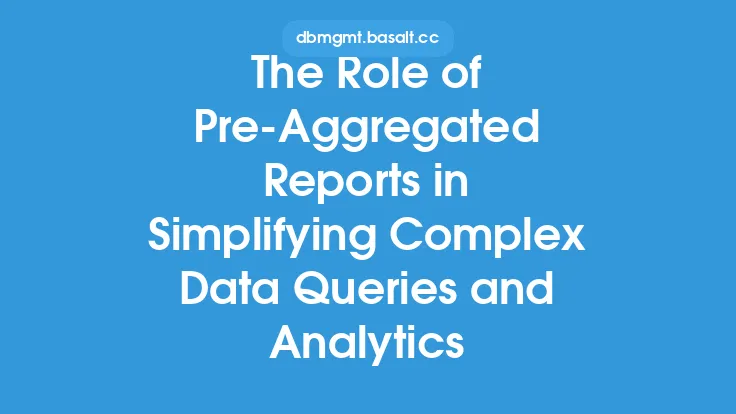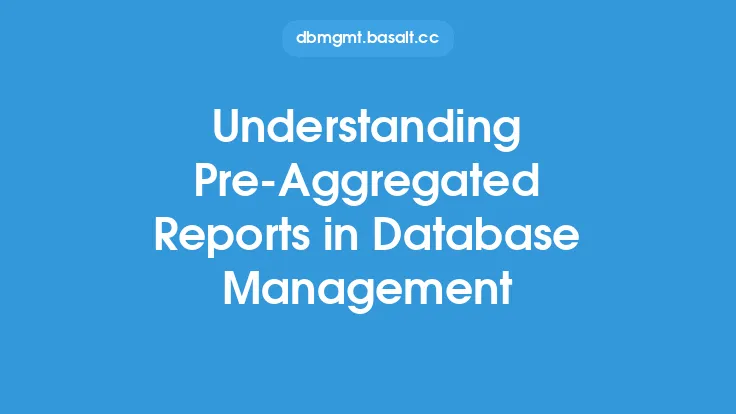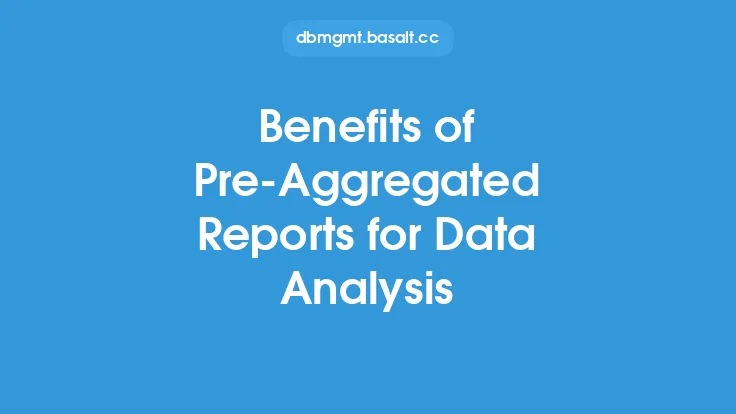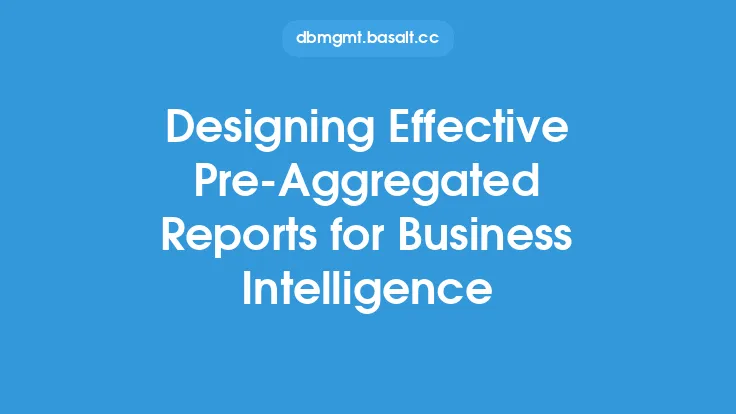In the realm of data denormalization, pre-aggregated reports have emerged as a crucial technique for enhancing query execution speed and data insights. By storing aggregated data in a separate table or data structure, pre-aggregated reports enable faster query execution, reduced computational overhead, and improved data analysis. This approach is particularly useful in scenarios where complex queries are executed frequently, and data freshness is not a top priority.
Introduction to Pre-Aggregated Reports
Pre-aggregated reports involve the process of pre-computing and storing aggregated data, such as sums, averages, and counts, in a separate table or data structure. This pre-computed data can then be used to answer queries, reducing the need for complex calculations and joins at query time. By doing so, pre-aggregated reports can significantly improve query performance, especially in cases where queries involve large datasets and complex aggregations.
How Pre-Aggregated Reports Work
The process of creating pre-aggregated reports typically involves the following steps:
- Data Selection: Identify the data that needs to be aggregated and reported on.
- Aggregation: Apply aggregation functions, such as sum, average, or count, to the selected data.
- Storage: Store the aggregated data in a separate table or data structure, often referred to as a summary table or aggregate table.
- Query Execution: When a query is executed, the database can use the pre-aggregated data instead of recalculating the aggregations from the base data.
Types of Pre-Aggregated Reports
There are several types of pre-aggregated reports, each with its own strengths and weaknesses:
- Rollup Reports: These reports involve aggregating data at multiple levels of granularity, such as daily, weekly, and monthly.
- Drill-Down Reports: These reports allow users to drill down from a high-level summary to more detailed data.
- Pivot Table Reports: These reports enable users to rotate and aggregate data to analyze it from different perspectives.
Benefits of Pre-Aggregated Reports
Pre-aggregated reports offer several benefits, including:
- Improved Query Performance: By storing pre-aggregated data, queries can be executed faster, reducing the computational overhead and improving overall system performance.
- Enhanced Data Insights: Pre-aggregated reports can provide faster access to summarized data, enabling users to gain insights and make decisions more quickly.
- Reduced Data Complexity: Pre-aggregated reports can simplify complex data queries, making it easier for users to analyze and understand large datasets.
Technical Considerations
When implementing pre-aggregated reports, several technical considerations come into play:
- Data Freshness: Pre-aggregated reports may not always reflect the latest data, as the aggregated data may be updated periodically.
- Data Consistency: Ensuring data consistency between the base data and the pre-aggregated data is crucial to maintain data accuracy.
- Storage Requirements: Pre-aggregated reports require additional storage space to store the aggregated data, which can impact overall system storage requirements.
Use Cases for Pre-Aggregated Reports
Pre-aggregated reports are useful in a variety of scenarios, including:
- Business Intelligence: Pre-aggregated reports can be used to provide fast and accurate insights into business performance, enabling informed decision-making.
- Data Warehousing: Pre-aggregated reports can be used to optimize query performance in data warehousing environments, where complex queries are common.
- Real-Time Analytics: Pre-aggregated reports can be used to provide fast and accurate insights into real-time data, enabling timely decision-making.
Conclusion
Pre-aggregated reports are a powerful technique for improving query execution speed and data insights. By storing aggregated data in a separate table or data structure, pre-aggregated reports can reduce computational overhead, improve query performance, and enhance data analysis. While there are technical considerations to keep in mind, the benefits of pre-aggregated reports make them a valuable tool in the realm of data denormalization. As data continues to grow in volume and complexity, pre-aggregated reports will play an increasingly important role in enabling fast and accurate data insights.





